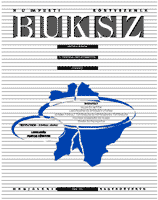

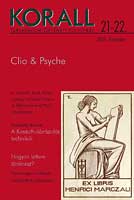
Keywords: Hungary; history; 19th century; 1848; revolution; Kossuth Lajos
More...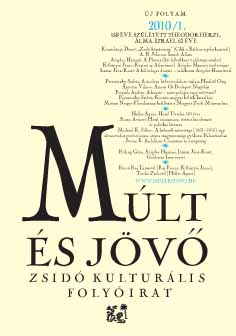
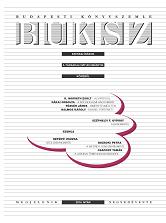
György Galántai – Júlia Klaniczay (eds.): Artpool The Experimental Art Archive of East-Central Europe History of an Active Archive for Producing, Networking, Curating and Researching since 1970 Artpool Art Research Center, Budapest, 2013. 535 oldal, á. n. Menyhért Anna: Női irodalmi hagyomány Napvilág Kiadó, Budapest, 2013. 260 oldal, 3200 Ft Forrai Gábor: Kortárs nézetek a tudásról L’Harmattan Kiadó, Budapest, 2014. 220 oldal, 2200 Ft Daron Acemogˇ lu – James A. Robinson: Miért buknak el nemzetek? A hatalom, a jólét és a szegénység eredete Ford. Garamvölgyi Andrea HVG Kiadó, Budapest, 2013. 520 oldal, 4165 Ft Kicsi Sándor András: Kihalt nyelvek, eltűnt népek 100 nyelv halála Az ékesszólás kiskönyvtára 27. Tinta Könyvkiadó, Budapest, 2013. 133 oldal, 1490 Ft
More...Keywords: Hungarian literature;
Keresztesi József–Angyalosi Gergely– Kocziszky Éva: Három bírálat egy könyvrõl (Kukorelly Endre: TündérVölgy avagy Az emberi szív rejtelmeirõl) • Fogarassy Miklós: Pontos történetek – eredeti változatok (Polcz Alaine: Leányregény; Karácsonyi utazás) • Bodor Béla: „...Vass vagyok, a teremtés korrodáltja...” (Vass Tibor: Esõnap) • Dupcsik Csaba: Szétesõ rendszerek (Emmanuel Todd: A birodalom után. Tanulmány az amerikai rendszer szétesésérõl) •
More...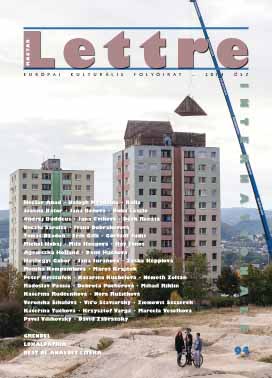
Deczki Sarolta: A testbe írt történelem (Nádas Péter Párhuzamos történeteiről) Görözdi Judit: Történetiség és emlékezet Esterházy Harmoniájában Németh Zoltán: Mágikus realizmus a magyar irodalomban Boka László: Erdély-regények, történelmi alulnézetek
More...The essay describes the functioning of Central European societies, which were being modernized and developing middle classes, as a cultural practice in the wider sense. It interprets it as a cultural behaviour in which the world of the middle-class individual appears as a peculiar self-identity, world-interpretation, and life style. All this is grasped through discussing a special type of press product: the illustrated educational-entertaining family weekly. The analysis focuses on the press of the large cities — first of all Budapest and Prague — of the Hapsburg empire, but the nature of the genre, the following of models justifies the analysis of certain German newspapers as well. The popularity index of these papers marked the temporal coordinates, the period beween 1870 and 1910, with an outlook on the second half of the nineteenth century. Introducing and comparing the most popular family weeklies of the era (Gartenlaube, Vasárnapi Újság, Světozor, A Hét, Új Idők, Zlatá Praha), the author is trying to find out what social needs called this genre into existence, how the publishers and editors of these weeklies responded to it, how these weeklies display on themselves the double-faced nature of the economic, social, and cultural development of the region (the relationship between traditionality and modernity), how these papers contributed to the bourgeois development of the Central European region and the strengthening of its national identity. The investigation includes the readers of the weeklies as well. The compositions of the various periodicals are outlined, the public and semi-public places of reading newspapers (cafés, clubs, associations) presented, changes of reading habits and their effects on consumers's habits analyzed.
More...Márton László: Költőélet, költőhalál (Ferencz Győző: Radnóti Miklós élete és költészete) • 1553 Sárközi Mátyás: Babits Jónása angolul (Babits Mihály: Jónás könyve – The Book of Jonah) • 1573 Benyhe János: Mai magyar költészet spanyolul (Tendré un helicóptero. Muestra de una nueva lírica húngara. Maria T. Reyes és Georges Ferdinandy fordítása. Gondozta Jesús Tomé) • 1575 Bán Zoltán András: A nyolcadik főbűn (Főbőnösök. Hét szerző antológiája) • 1579 Ruzsa György: Pavel Florenszkij: Az ikonosztáz • 1581
More...Ambrus Judit: Vackor átvilágításon • 1234 Szegő János: Isten hozott – amúgy ki vagy? (Grecsó Krisztián: Isten hozott) • 1241 Bodor Béla: Jelzőtüzek a lektűr árnyékában (Papp András: A suttogó) • 1245 Tverdota György: „Ne gondolj a gonddal” (Lengyel András: „...gondja kél a gondolatban”. Az értekező József Attiláról) • 1248 Lengyel András: József Attila iratainak fotóreprodukciós kiadása („És ámulok, hogy elmúlok”. József Attila-iratok. Összeállította, bevezette Varga Katalin) • 1254 Gyuricza Eszter: A nemiség performativitása (Judith Butler: Jelentős testek) • 1257 Ferencz Győző: Jánosy István (Besztercebánya, 1919. május 18.– Gyenesdiás, 2006. augusztus 19.) • 1264 Bodor Béla: Faludy György (1910–2006) • 1268
More...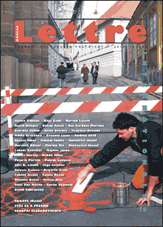
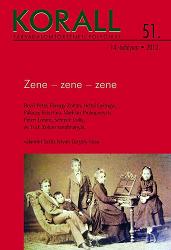
Zoltán Inokai Tóth (1911–1956) was a historian and professor at the Eötvös Loránd University, Budapest. His father originally came from a Calvinist family of landed peasants from the Bánság region. He later rose to the position of a high-ranking financial civil servant and strove to provide his son with the best education available for the urban bourgeoisie, which included musical tuition too. Young Zoltán Tóth became a good violinist, and hoped to become a professional musician during his university years studying history and theology. Even after becoming a secondary school teacher in the 1930s, he continued to dream of a musical career. He compiled the catalogue of the family’s musical library in the summer of 1937 at Temesvár (Timişoara, Romania). German-influenced Central European art music as cultural consumer goods for the educated middle class was fundamentally shaped by sheet music publishing and musical education. The study of the 228 titles in this catalogue reveals how these characteristics became integrated into the view of society prevalent among middle class intellectuals at the time.
More...Keywords: Attila József; faith and poetry
Religion and poetry - an analysis of the poems by József Attila. The author of the essay examines this rarely searched topic.
More...ZUSAMMENFASSUNG: Frühchristliche Entdeckungen (bis 313 n. Chr.) in den Römischen Provinzen aus der Umgebung der Dakien Beiträge zur Geschichte des Frühchristentums (Vorkonstantinisches). I. Um die Erforschung des Frühchristentums in den dakischen Provinzen (106-275/ 303) zu erleichtern, haben sich die Verfasser vorgenommen, die Lage des Christentums aus dieser Zeit in den mit den Dakien benachbarten römischen Provinzen zu analysieren sowie in jenen, zu denen sie engere Verbindungen hatten und die eine Brücke zu den stark christianisierten Provinzen bildeten. In der Ausarbeitung haben sich die Verfasser auf archäologischen Entdeckungen gestützt. Eine umfangreiche und auf Themen aufgeteilte Literatur liegt zu Grunde der Analyse. II. Die erforschten Provinzen (Noricum, Pannonia Superior, Pannonia Inferior, Moesia Superior, Dalmatia, Moesia Inferior) waren im 2.-3. Jahrhundert gut organisierte und verwaltete Grenzgebiete; schon seit dem 1. Jahrhundert n. Chr. erobert, haben sie sich gut in die römische Organisierung eingegliedert; ihre Wirtschaft blühte und die Bevölkerung (Kelten, Illiren, Moesen und Thraken) wurde ziemlich schnell romanisiert. Die Provinzen, die sich zwischen den westlichen und östlichen Teilen des Reiches befanden, waren besonders reich an Kulten; die „nationalen“ wurden zuerst von den griechisch-römischen und nachher von den orientalischen überlagert; die Formen des Synkretismus sind zahlreich und interessant; zwischen den aus dem Orient von zahlreichen Kaufleuten, Händlern und Kolonisten mitgebrachten Religionen befand sich auch das Christentum. Ein anderer Weg, auf dem dieses eingedrungen ist, war vom Westen her (Italien und insbesondere Rom). III. Die historische Literatur über die Anfänge des Christentums in diesen Provinzen beruht noch immer auf Legenden, auf den Texten der Apologeten und weniger auf den archäologischen Entdeckungen. Die Anzahl der Beiträge ist gering und die existierenden haben sich eher auf das 4.-6. Jahrhundert konzentriert. IV. Die Verfasser haben einen Register der archäologischen Funde mit christlichem Charakter zusammengestellt (siehe Kap. VI), in dem die Gegenstände in vier großen Gruppen eingeteilt wurden: a. Gegenstände, die zum Ablauf des Kultes dienten; b. eigentliche christliche Gegenstände; c. zum Christentum bekehrte Gegenstände; d. Erkennungszeichen. Aufgrund dieses Registers beurteilen sie den Wert der christlichen Legenden, der apologetischen Texte und versuchen eine Verbindung zwischen ihren Daten und den archäologischen Tatsachen, Wirklichkeiten zu finden. V. Anstatt der Schlußfolgerungen legen die Verfasser einige Feststellungen dar. a. die archäologischen Funde sind ziemlich zahlreich; sie sind insbesondere in den Städten überwiegend; ihre Verbreitung beweist sowohl die Eindringungswege des Christentums als auch in erster Linie einige Ideen/ Gedanken aus den schriftlichen Quellen.
More...
The reform of the political system in the second half of the 1980s apparently also affected the state security service. One of the most important questions of power was how to determine the new structure and tasks of political police in the period of the transition and later. Several different concepts were developed by the Hungarian Socialist Workers’ Party, the opposition and the state security service itself for the restructuring of political police. As part of the change, the position, role and future tasks of the security services had to be defined. Previously, the so-called state security tasks in Hungary were carried out on the basis of low-level secret regulations, which severely limited basic human rights laid down in the Constitution. During the year, the State Security Services came up with several proposals to solve the problems of constitutional transformation. However, these – feasible or unfit – propositions were disregarded by the leadership of the Ministry of Interior, the government and the legislature. Despite the relatively successful implementation of a democratic system in 1989, the transformation of the intelligence agencies remained incomplete. Intelligence organizations held fast to the old concept of an oversized, hyper-bureaucratic intelligence system. The system itself was changing but not at the expected pace and, to some extent, it kept carrying the baggage of its past. Nevertheless, the services kept referring to legality and constitutionalism day by day.
More...
Alain de Libera: A középkorban gondolkodni Ford. Lukács Edit Anna. L’Harmattan Kiadó – Szegedi Tudományegyetem Filozófia Tanszék, Bp., 2011. 336 old., 3500 Ft Papp Zoltán: Elidôzni a szépnél Kant esztétikájáról Atlantisz Kiadó, Bp., 2010. 403 old., 3295 Ft Biczó Gábor: Hasonló a hasonlónak… Filozófiai antropológiai vázla t az asszimilációról Kalligram – Pesti Kalligram, Pozsony– Bp., 2009. 464 old., 2990 Ft Buda Béla: Az elme gyógyítása Kritikus pilla ntások eg y különös orvosi szak terüle tre Háttér Kiadó, Bp., 2011. 402 old., 3990 Ft Feischmidt Margit (szerk.): Etnicitás Különbségteremtô társadal om Gondolat, Bp., 2010. 500 old., 3890 Ft Debreczeni Attila – Gönczy Monika (szerk.): Ragyogni és munkálni Kultúratudományi tanulmányok Kaz inczy Ferencrôl Debreceni Egyetemi Kiadó, Debrecen, 2010. 486 old., 2990 Ft Tüskés Anna (szerk.): Ars Perennis Fiatal Mûvésze ttörténészek II . Konfe renciája (2nd Conference of Young Art Historians) Budape st, 2009 CentrArt Mûvészettörténeti Mûhely Tanulmányok (CentrArt Arthistorical Workshop Studies) Primus Gradus Ta nulmányok (Primus Gradus Studies) CentrArt Egyesület, Bp., 2010. 376 old., á. n. Molnár Antal – Szabó Ferenc SJ : Bangha Béla SJ emlékezete JTMR–Távlatok, Bp., 2010. 400 old., á. n. Huszár Ágnes: Bevezetés a gendernyelvészetbe Miben különbözik és miben eg yez ik a férfiak és a nôk nyel vha sznála ta és kommunikációja? Tinta Könyvkiadó, Bp., 2009. 128 old., 1990 Ft (Segédkönyvek a nyelvészet tanulmányozásához)
More...

Szegô János–Radics Viktória: Két bírálat egy könyvrôl (Bán Zoltán András: Meghalt a Fôítész) • 222 Bodor Béla–Lengyel Imre Zsolt: Két bírálat egy könyvrôl (Kukorelly Endre: Ezer és 3, avagy a nôkben rejlô szív) • 235 Nóvé Béla: Áthallásos otthonok, versek (Markó Béla: Egy irredenta hétköznapjai) • 246 Sulyok Bernadett: Nyalábnyi fénysugár (Molnár Krisztina Rita: Különlét) • 251 László Ferenc: Tudós fô – Vekerdi László (1924–2009) • 254
More...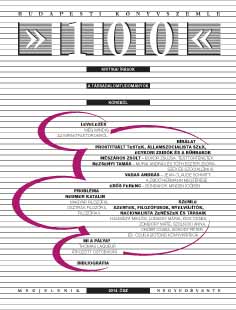
Mészáros Zsolt - Bokor Zsuzsa: Testtörténetek, A nemzet és a nemi betegségek medikalizálása a két világháború között Kolozsváron Bezsenyi Tamás - Murai András – Tóth Eszter Zsófia: Szex és szocializmus, avagy „hagyjuk a szexualitást a hanyatló Nyugat ópiumának”? Vadas András - Jean-Claude Schmitt: A zsidó Hermann megtérése, Önéletírás, történelem, fikció Erős Ferenc - Bűnbakok minden időben, Bűnbakok a magyar és az egyetemes történelemben, Szerk. Gyarmati György, Lengvári István, Pók Attila, Vonyó József
More...